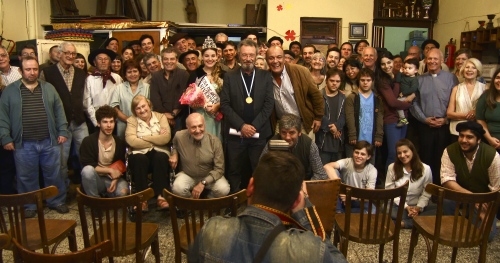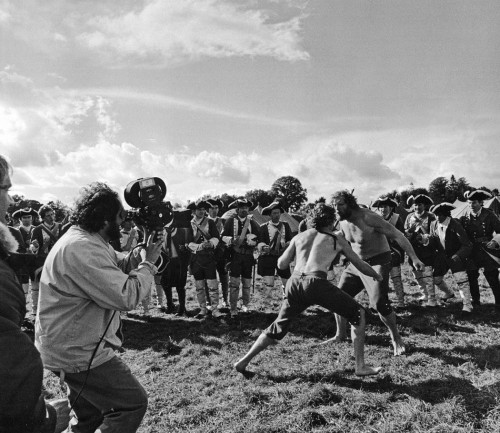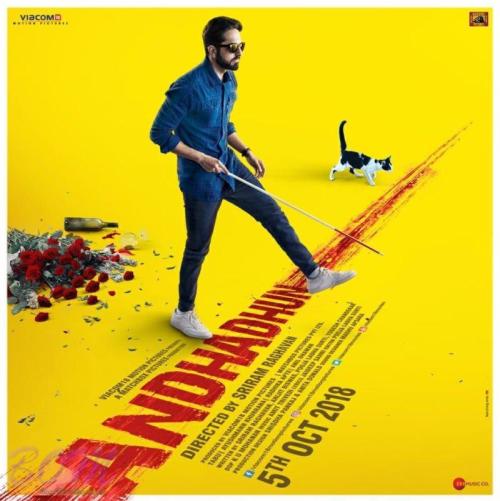
A Nobel Prize winning author travels to his rural hometown in Argentina to accept the town’s highest civilian honor – The Distinguished Citizen award. His hometown Salas is where all of his fiction is set, but even returning after 40 years as a ‘national hero’, the author still finds Salas and its folks full of bigotry and vanity. This Argentine cultural satire isn’t aiming at “feel good journey back home”. It’s a dark comedy that questions the true value of art: Should it challenge our society’s expectations or massage it?
It’s generally suggested that good beginnings have the protagonist start at their most vulnerable state. One of the strengths of the Argentine film ‘The Distinguished Citizen’ is that it opens with the protagonist at his highest point but it is actually showing him at his lowest. Winning the Nobel Prize must be the greatest moment in any literary writer’s career but Daniel Mantovani (played by Oscar Martinez) accepts the prize not in a humble, proud manner. He looks distraught, smiles awkwardly as he greets the Swedish monarch. In his speech the Argentinean writer considers this moment ironic to the artistic worth he has always tried to carry in his work, that true art should challenge what is “established”, make readers “uncomfortable” for accepting and not questioning the normalcy that surrounds them. But standing at the podium, he feels his new place in the elite circle of Nobel laureates has come at the cost of his work fitting the tastes of the elites (kings, academics, judges and specialists) and not being challenging enough anymore. So he asks, does the Nobel Prize celebrate him or really make him redundant?
Five years on, Daniel still hasn’t found peace with that question. We find him in Barcelona staring at what looks like a discarded flamingo bird figure floating on a pond in a park. This visual motif is much emphasized to give an impression of Daniel’s state of mind post his Nobel Prize win. It seems he is just floating in a static reality where he’s run the course of his purpose and nothing excites him anymore. The scenes that follow, build on this image, showing us how he is bobbing lifelessly through each day: accepting or declining invitations to lectures and interviews, honors and awards, writing prefaces, introductions and recommendations for the works of his colleagues. He’s yet to write a new book after his win. Why? Writer’s block is never hinted but it is more likely that he’s lost motivation to write altogether.
There’s nothing so special about the setup. We’ve seen so many iteration of an overachieving (sometimes underachieving) artist, going through old age, who has hopelessly lost touch of her craft and yearns for a new experience to rescue her from this creative rut. Often in the lust for new experience they backtrack to the past: connecting with old friends, old flames and estranged children. This film too plays this classic riff. Here, Daniel gets an invitation from the Mayor of Salas, his hometown in Argentina, to receive the town’s highest civilian honor – The Distinguished Citizen.
But the kind of closure Daniel expects by reconnecting with his old hometown is complex and not that straightforward. He’s never been back to Salas since leaving it in his youth. And 40 years have passed in between. This detachment is understandable for a person who loathed his hometown, moved away, turned his back and cleansed himself off any trace from his old self. But Daniel has always revisited Salas, at least his memories of Salas, which are the inspirations for all the stories and novels he has ever written as a writer.
At first, when he decides to leave for Salas, we might mistake Daniel’s newfound enthusiasm for his hometown as a kicker for a nostalgia trip or even rediscovering his real roots. But I have to point out here, that this is a black comedy and not a feel-good road trip adventure. It isn’t aiming at an uplifting story something in the way of ‘As Good as it Gets’ where a grumpy, insensitive author (Jack Nicholson) transforms into a self-less empathizing man by recognizing the good in people. ‘The Distinguished Citizen’, on the other hand comes as an anti-thesis to the transformational arc of Nicholson’s film. It is loyal to the “true art challenges society, doesn’t bow down to it” philosophy professed by its protagonist at the beginning. So instead of romanticizing the small-town textures of Latin America, the film challenges its bigotry and vanity.
The simpleton folks of Salas know that Daniel is a world famous author. They follow him around the town and hold up their phones to click pictures of him. Most of Salas’ working class people might not have read even a single word Daniel has ever written, let alone read his books. For them Daniel’s fame is much more exciting than his books. Others who have read his work (or heard one of his stories) are less bothered about its literary quality and more into mining scandals by figuring out who might be the real-life inspirations for the characters of Daniel’s frank and overtly dark fictional Salas.
For instance, a local troublemaker crashes Daniel’s lecture and confronts him for trying to sell an untrue and sensationalist image of this beautiful town and its honest people to his European readers. After the troublemaker leaves, Daniel slouches on the desk and shares a very emotional insight to his audience. He tells them that he writes literature not leaflets on ethical behaviors, and the despicable actions of his characters are rooted in the world that we live in, and it doesn’t mean he approves or disapproves their actions. Then a lady raises a hand from the audience and asks Daniel: “But why don’t you write about nice things?” This is where Daniel really gives up trying to defend his fiction in front of his own people, who will likely appreciate his writing if he wrote travel books about the place, highlighting good place to sightsee and dine.
At a broader level, directors Gastón Duprat and Mariano Cohn are interested in presenting a commentary on Latin America’s aspirations to rise above its rough edged cultural presence to achieve European standards of refined culture. Though at times, Daniel’s cosmopolitan snobbishness make him appear more like a product of Eurocentric values and it feels like he’s looking down upon his hometown too much. But I think Duprat and Cohn find a balance in making fun of and criticizing both of these worlds. Late in the film, Daniel is unveiling his statue at Salas’ local park, he quips by recalling what one of his Nobel laureate colleagues told him once: “Winning a Nobel Prize turns you into a statue”. And in another scene, Daniel reflects that being considered a “distinguished figure” of the community or a “national hero”, your importance is only felt when you are expected to give speeches at public events because rest of the time you are put away in a shelf like an old trophy, where you do nothing but gather dust.
By virtue of his discontent towards both his Nobel Prize and Distinguished Citizen honor, Daniel has the last laugh. He comes to peace with his art. His art doesn’t need a home in the comforts of high-art or in the narrow-mindedness of small town Salas. Because real art transcends prescribed realities and cannot be contained by cultural politics.





